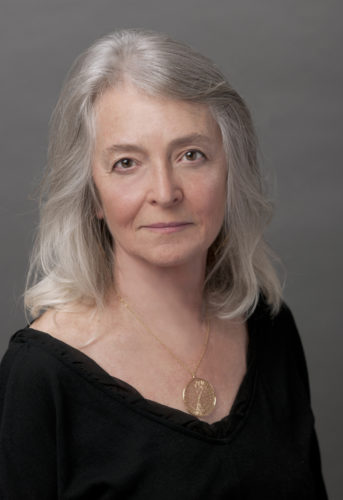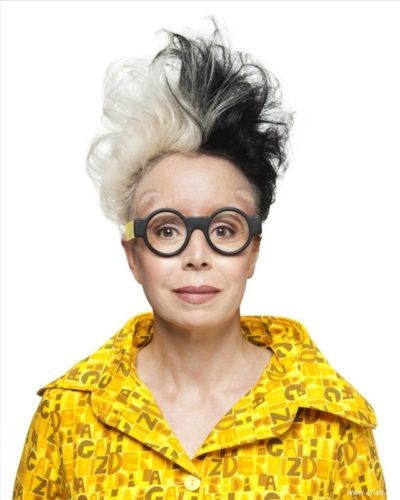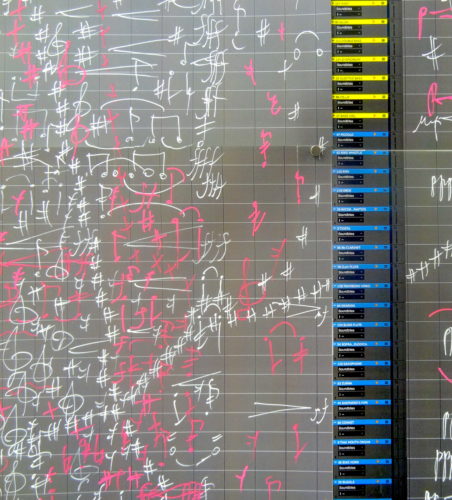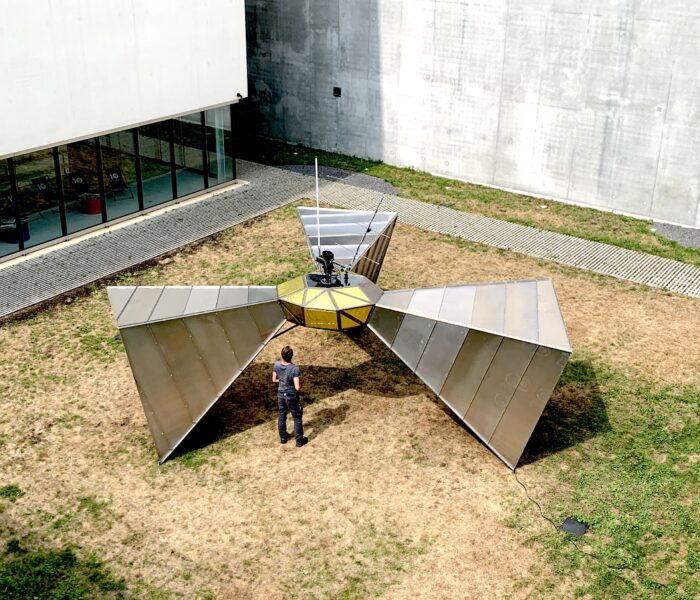It's a crazy project, like the ones that sometimes spring up in the heads and guts of artists, a world-project, almost encyclopedic... Seminal is a hydrid proposition: text, reading, voice, instruments. In 49 minutes, Frédéric Acquaviva unfolds a rich, rustling universe, carried by a mysterious microtonal harmony. Take a behind-the-scenes look at the making of an original score.
From one work to the next, Frédéric Acquaviva doesn't like to repeat himself. Repeating the same thing is not for him! It took him two years - in total confinement - to complete Seminal. The cast is sizeable: 128 musicians, 124 instrumentalists and four voices, forming a virtual orchestra and a vocal quartet of soloists. Mezzo-soprano Loré Lixenberg, singer Joan La Barbara, tenor Wills Morgan and the voice of Belgian visual artist and video director Jacques Lizène are all part of the cast. " Having a non-singing artist sing allowed me to instill a little distance, a dose of humor that seems necessary to any artistic approach," confides Frédéric Acquaviva. But that's not all! Another voice, a mysterious speakrine, overhangs the whole, that of performer ORLAN , who chants an original text: "It's an enumeration of datas that I translated into English," explains Frédéric Acquaviva, " a cosmological list that enumerates more or less false theories based on the end of species and the world...".




The sheer density of this new work was palpable in April at Satellite, an art gallery in the 11th arrondissement of Paris. On the walls, the immense graphic score allowed the public to see, at the same time as hearing the work, absolutely all the sound tracks arranged by the composer, the interplay of textures and combinations - in short, the intimate life of Séminal. Sound and image to better engage the listener and penetrate the bowels of Frédéric Acquaviva's original approach.
As he contemplates the graphic score on the walls, the composer explains: "I asked all these very different musicians, from different worlds, sometimes at opposite ends of the spectrum, to send me a recorded note of their choice, from which I would compose. The music would unfold like DNA. Frédéric Acquaviva's ambition was to compose an orchestral work with a symphonic dimension. The composer's starting point was the observation that the Romantic orchestra was out of breath, hackneyed and explored a thousand times over. The instrumentarium fascinated the creator. "I wanted each musician to play a different instrument. No question of 16 first violins, 14 second violins, 12 violas, 10 cellos... But rather oud, folk guitar, Irish flute, prehistoric drum, mouth organ, theorbo, synthesizer, trombone, harmonica, shophar, old guitar found on the ground in Berlin, zither, alphorn, Thai organ... The list goes on! This unique orchestra has a name: the PolyTransMetaOrchestra (P.T.M.O).
"These are instruments that are never heard together, that are never meant to be played together," says the composer. For the first time, the PolyTransMetaOrchestra brings together 124 completely eclectic instruments, usually separated in space and time, as they are spread across the globe. A virtual orchestra, but a very human one. "I like working with musicians I've met: my friends, artists I respect. I wanted to mix professional instrumentalists, virtuosos, and passionate amateurs, from 1 to 94 years old!" Frédéric Acquaviva had never worked with so many different timbres. "How do you create a rich, complex proposal from such simple elements as a single note for each instrument? I've been told that this music is a definition of anarchism, and I quite agree: everyone is a soloist. I also worked a lot on rhythmic shifts.
And in concrete terms? With all these instrumental and vocal tracks in front of his computer, Frédéric Acquaviva decided to compose in real time, as and when he received sound files from the musicians involved. Paradox lies at the heart of Séminal: while ORLAN's voice tells of the disappearance of all forms of life, the orchestra contradicts it. Gradually, a dense, rustling, microtonal harmony emerges, asserting itself, taking birth from the DNA of each instrument, as if each note wanted to fight to be heard and proliferate. In short, to exist.
As the work progresses, the composer proposes new, ever-changing combinations of instruments. "Keyboards-voice, percussion-strings, percussion-copper, everyone... Towards the last five minutes, there are some electronic manipulations...". At the end, you hear 600 instruments, because the tracks are multiplied. Vertiginous! As the piece progresses, ORLAN's voice disappears, fading away in favor of the instrumental density. I repeated the end quite a few times," she says, "because it was too static or saturated with color, and you couldn't hear anything. Everything was difficult, but everything was joyful," smiles Frédéric Acquaviva. Instead of composing on my own, I had all these sound recordings, and behind each one of them was a beautiful story. A friendship, a musician confined to the ends of the earth, in China, for example, a recording made in an elevator car...".



Containment or not, Frédéric Acquaviva had planned to compose this work. The pandemic has given it a new dimension, proving stubbornly that"you can't stop creation, you can't stop the imagination". The exhibition is over, but the album was released last April by Presses du réel, with a rich explanatory booklet and an impressive list of all the musicians who make up this first virtual world orchestra. "Séminal is a Noah's Ark of instruments from all horizons.
Suzanne Gervais
Book release Enquête de flagrance pour musique létale (Al Dante / Les Presses du Réel) at the Marché de la poésie on June 11, Place St Sulpice 75006 Paris



)



